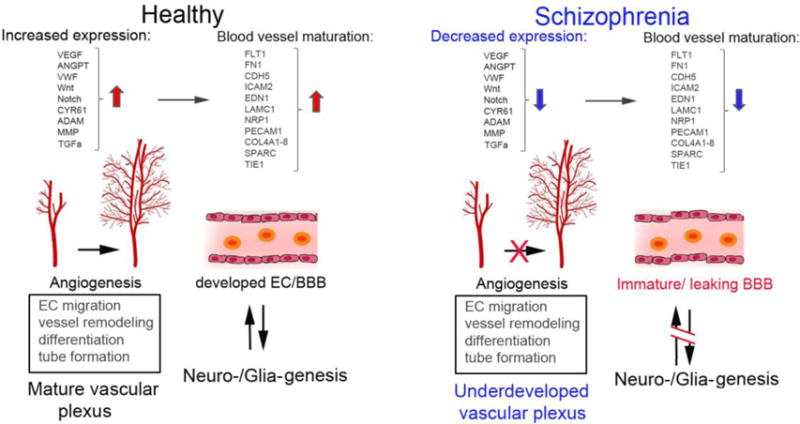Figure 1.

Plausible mechanisms (including participating genes) that take place in postnatal angiogenesis and their general effects in healthy and schizophrenia brains.
Active angiogenic mechanisms aiming development of adequate vascular supply take place during early development (neurogenesis) and after birth, during myelination and synaptic plasticity, the processes that entail extraordinary metabolic demands. Growth factors, signaling angiogenic pathways and tissue remodeling proteins are released from neural cells, leading to the building of well-developed vascular plexus that maintain healthy brain function. In schizophrenia reduced gene expression of angiogenesis signals and remodeling proteins suggests reduced vessel sprouting/microvascular length, leading to an overall reduced blood flow and oxygenation of brain tissue. At the cellular level, the ECs begin to reduce the expression of growth factor receptors affecting the survival capacity of vascular endothelium and formation of endothelial junction in BBB. Many of these factors combine may create conditions for permeable/underdeveloped BBB, which result in spill over systemic plasma proteins into the brain tissue affecting wide-range of neural processes, including myelination, formation perineuronal nets-ECM and ultimately neuronal connectivity.
